Welcome to Bosnia and Herzegovina (BiH), a country where diverse cultures meet! Although it had a tumultuous past until the early 2000s, Bosnia and Herzegovina is now starting to attract tourists again. But not much is known about the country, so for someone interested in visiting, it can be a pain to even decide it is a good idea, let alone to get an idea about costs, safety, ease of getting around, sightseeing options and so on. Before I went there for the first time, I was in the same boat. I had no idea what to expect, and although I received warnings about the country’s safety, my travel experience was surprisingly peaceful and culturally satisfying. Oh, and people are super friendly!
In this Bosnia and Herzegovina travel guide, we’ll delve together into the intricate tapestry of this country, providing insights into its geography, cultural heritage, and outdoor adventures. From navigating transportation options to understanding local customs, the aim is to equip you with the knowledge needed to make the most of your travels in this captivating country.
General Information About Bosnia and Herzegovina
Bosnia and Herzegovina is located in southeastern Europe and is bordered by Croatia to the north, west, and south, Serbia to the east, and Montenegro to the southeast.
The official languages are Bosnian, Croatian, and Serbian, reflecting its multicultural society. Although younger people tend to speak at least some level of English, older people are more familiar with Russian or German. Even if you’re sticking to tourist areas where people will be able to help you in English, you should still make an effort to learn a few basic phrases in Bosnian. Showing you at least tried is a great way to break down language and cultural barriers.
The official currency in Bosnia and Herzegovina is the Convertible Mark and the capital city is Sarajevo.
When to Visit Bosnia and Herzegovina
When planning a trip to (BiH), it’s important to consider the seasonal variations in weather and climate to ensure a comfortable and enjoyable travel experience. BiH experiences distinct seasons, each offering unique opportunities for exploration and activities. Here are some seasonal considerations to keep in mind:
Spring (March to May):
- BiH’s springtime offers pleasant weather and picturesque scenery, making it the perfect season for outdoor activities and sightseeing. As trees reclaim their leaves and flowers bloom, the countryside is filled with vibrant colors.
- Since the weather is usually milder and the temperatures are lower than in the summer, spring is also an excellent season for hiking. Before the summer crowds arrive, take a walk to a waterfall like Kravica Waterfall or explore scenic trails in national parks like Sutjeska National Park.
Summer (June to August):
- BiH’s summer months are the busiest travel times due to the pleasant weather and long, sunny days. It’s the ideal season for swimming in the sea, as well as in lakes and rivers, and touring historical and cultural landmarks.
- During the summer, popular locations like Mostar, Sarajevo, and Jajce might get congested, so schedule your travels appropriately and reserve accommodation in advance, especially in popular tourist areas.
- Remember that summers in Bosnia and Herzegovina can get quite warm; therefore, to ensure your comfort while traveling, bring hats, sunscreen, and light, breathable clothing.
Autumn (September to November):
- Autumn in BiH brings cooler temperatures and vibrant fall foliage, making it a picturesque time to visit. The countryside is transformed into a vibrant tapestry of red, orange, and yellow, offering breathtaking scenery for outdoor activities and photography.
- Given that it coincides with the region’s grape harvest and wine festivals, autumn is a great time of year for wine enthusiasts to travel to Bosnia and Herzegovina. Discover the region’s winemaking traditions by visiting vineyards and sampling local wines.
- Be prepared for occasional rainfall in autumn, so pack waterproof clothing and footwear if you plan to spend time outdoors.
Winter (December to February):
- In BiH, winter brings cold temperatures and sporadic snowfall, particularly in the alpine areas of Jahorina and Bjelašnica. For those who prefer winter sports, now is the perfect time to visit BiH’s ski slopes and go skiing, snowboarding, or snowshoeing.
- When visiting Bosnia and Herzegovina in the winter, wear warm clothing and be ready for winter driving conditions, especially if you plan to explore the country’s rural or mountainous regions. Before you leave, check the road conditions and weather forecasts.
Safety and Practical Tips
When you start researching info about Bosnia and Herzegovina, some safety concerns will arise. The most notable are presented below:
Terrorist attacks: In the past, BiH had some small-scale terrorist acts and future attacks cannot be ruled out. However, the risks cannot be considered to be high.
Land mines: Because of the recent wars that happened on the country’s territory, there are still places where land mines are hidden in the ground. You can avoid this risk by walking only on marked trails, especially when going hiking and trekking.
Political protests: They are quite normal, not only in BiH but in all of Europe. Protests are normally peaceful, but if you want to take all measures of precaution, you should avoid the areas of gathering altogether.
Crime: Pickpocketing or thefts from cars can happen from time to time, but if you take the usual measures, you can minimize these risks. Take care of your belongings, don’t leave them unattended or flash valuables in public or in plain sight in cars, and of course, make sure you lock your car. Also, in tourist hotspots and other crowded places, some tourist scams can occur.
Familiarize yourself with emergency contact numbers in BiH, including:
- Police: 122
- Ambulance: 124
- Fire Department: 123
It’s also advisable to have contact information for your country’s embassy or consulate in BiH in case of emergencies or assistance with passport-related issues.
Transportation Options
First, let’s explore how to get there. By air, the country is served by several international airports, including Sarajevo International Airport, Mostar International Airport, and Banja Luka International Airport. These airports offer connections to major European cities and beyond, making air travel a convenient option.

And if you don’t have a car available for a road trip, you can also come from neighboring countries by train or by bus.
Now what are the best means of transportation around the country? That depends on where you’re going. If you’re hopping from city to city, Bosnia and Herzegovina has a well-developed railway network, with trains connecting major cities such as Sarajevo, Mostar, and Banja Luka. Bus services are also popular and convenient ways to connect different parts of the country, but if you want to explore the landscapes more, you should consider renting a car or hiring a guide to take you around.
Bosnia and Herzegovina has an extensive network of buses and trams in major cities, providing convenient options for getting around. Taxis are also readily available, especially in urban areas.
Navigating the transportation options is crucial for a smooth and hassle-free journey to Bosnia and Herzegovina. Whether arriving by air, train, bus, or car, travelers are greeted with a warm welcome and endless opportunities to explore the wonders of this captivating country.
Accommodation Options
Bosnia and Herzegovina offers a diverse range of accommodation options to suit every traveler’s preferences and budget. From luxury hotels to budget-friendly hostels and charming guesthouses, BiH caters to various needs and provides comfortable stays amidst its stunning landscapes.
Overview of Lodging Types:
- Hotels: BiH boasts a selection of hotels ranging from luxurious establishments in major cities to boutique hotels in scenic countryside locations. These hotels offer a range of amenities, including restaurants, spas, and business facilities, ensuring a comfortable and convenient stay for guests.
- Hostels: Ideal for budget-conscious travelers and backpackers, hostels are plentiful in BiH, particularly in popular tourist destinations like Sarajevo and Mostar. Hostels provide affordable dormitory-style accommodation with shared facilities, making them a great option for solo travelers and small groups.
- Guesthouses and Bed & Breakfasts: For a more intimate and personalized experience, guesthouses and bed & breakfasts are excellent choices. These cozy accommodations are often family-run and offer comfortable rooms with homemade meals and local hospitality, providing guests with a warm and authentic BiH experience.
- Holiday Rentals: Vacation rentals, including apartments, villas, and cottages, are available for travelers seeking a home-away-from-home experience. These self-catering accommodations are popular for longer stays and provide the flexibility to explore BiH at your own pace.
Recommended Areas to Stay:
- Sarajevo: The capital city of Sarajevo offers a wide range of accommodation options, from luxury hotels in the city center to charming guesthouses in the historic Baščaršija district. Staying in Sarajevo provides easy access to cultural attractions, dining options, and vibrant nightlife.
- Mostar: Famous for its iconic Stari Most (Old Bridge) and Ottoman architecture, Mostar offers a mix of hotels, hostels, and guesthouses along the picturesque Neretva River. Staying in Mostar allows visitors to explore its historic sites and vibrant bazaar while soaking in the city’s laid-back atmosphere.
- Banja Luka: The second-largest city in BiH, Banja Luka, boasts a range of accommodation options, including modern hotels and budget-friendly guesthouses. Visitors can enjoy the city’s green spaces, historic landmarks, and lively cafes while staying in Banja Luka.
Budget-Friendly Accommodation Tips:
- Book in Advance: To secure the best deals and availability, especially during peak tourist seasons, it’s advisable to book accommodation in advance.
- Explore Alternative Options: Consider staying in smaller towns and rural areas for more affordable accommodation options away from tourist hotspots.
- Shared Accommodation: Opt for dormitory-style rooms in hostels or shared apartments in vacation rentals to save on accommodation costs while meeting fellow travelers.
With its wide range of accommodation options, Bosnia and Herzegovina ensures a comfortable and enjoyable stay for travelers exploring its cultural heritage, natural beauty, and warm hospitality. Whether you prefer the luxury of a hotel or the coziness of a guesthouse, BiH offers something for every traveler’s taste and budget.
Things to Do and See in Bosnia and Herzegovina
Discover the Cultural Mix in Sarajevo
With a blend of Ottoman, Austro-Hungarian, and modern influences, the city’s capital is a cultural melting pot.
Discover the famed Baščaršija neighborhood, which is home to the Old Clock Tower and the Gazi Husrev-bey Mosque.
Explore Sarajevo’s Old Bazaar, where you should train your bargaining skills. As a matter of fact, I used to hate bargaining before visiting this bazaar, but here I practiced it so much that it started to come naturally.
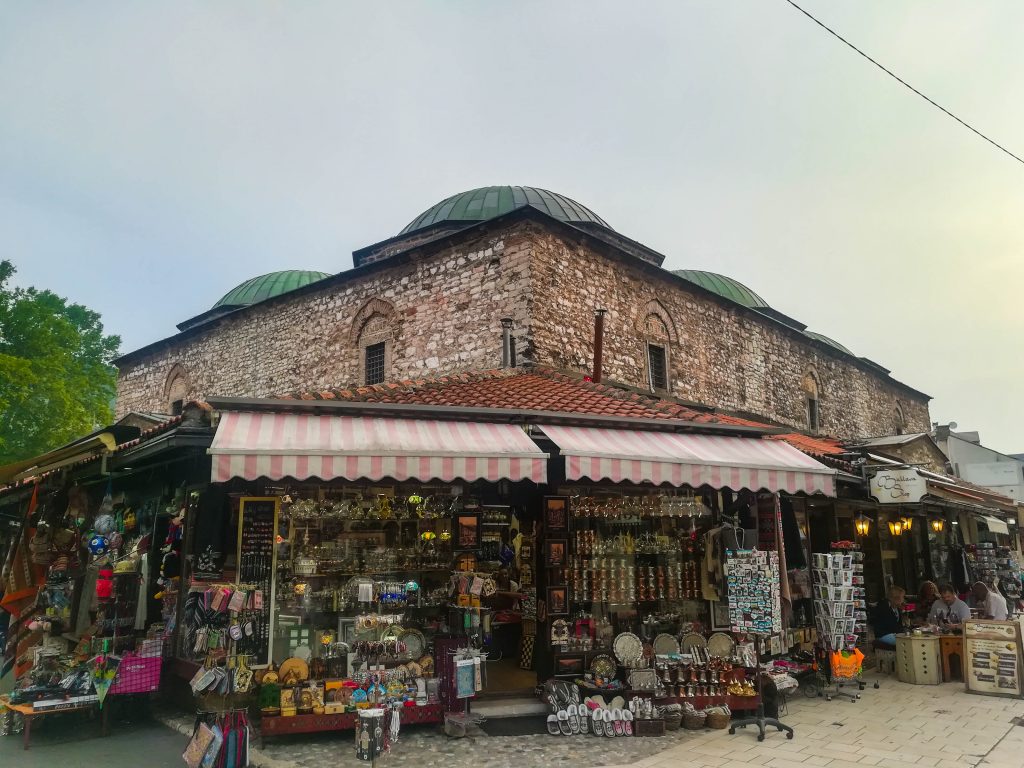
An important piece of history is the Latin Bridge, the site of the 1914 War’s outbreak due to the assassination of Archduke Franz Ferdinand. Afterward, go and explore the Sarajevo Tunnel Museum to learn more about the city’s complicated past.
Visit the most important attractions of Sarajevo on this full-day tour.
Explore the Charm of Mostar
Famous for both the Stari Most (Old Bridge) over the Neretva River and its breathtaking Ottoman architecture, Mostar is a must-see destination.

Explore the Old Town’s cobblestone lanes, which are dotted with historic homes and artisan stores.
See the historic Koski Mehmed Pasha Mosque and stroll through the charming neighborhoods surrounding Mostar’s famous bridge.
To learn more about the history of BiH, visit the Museum of War and Genocide Victims, which focuses on the events of the Bosnian War between 1992-1995.
Click here if you want to go on a private walking tour of Mostar with a local guide.
Enjoy the Cultural Heritage of Blagaj
Situated just a short drive from the historic city of Mostar, Blagaj beckons travelers to discover its serene beauty, rich history, and unique cultural heritage.

One of the highlights of Blagaj is the Buna Spring, a natural wonder where the Buna River emerges from an underground karst cave system. Perched at the edge of the Buna Spring is the Dervish monastery, from the 16th century.
Discover BiH with a guide, on a day tour from Mostar: Kravice Waterfalls, Blagaj, Počitelj.
Discover the History of Počitelj
This UNESCO World Heritage Site is renowned for its exquisitely maintained Ottoman architecture and is a medieval village tucked away along the Neretva River.
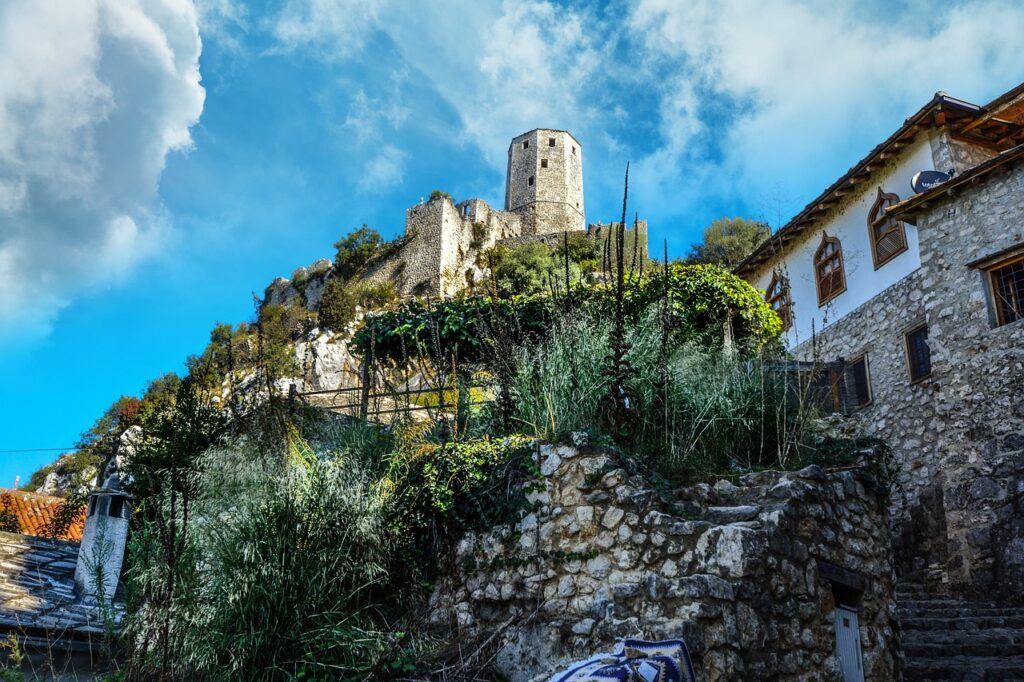
Discover the historic stone buildings, mosques, and old fortresses scattered around Počitelj’s stunning scenery.
See this attraction as part of the tour that will take you to Mostar, Konjic, Sufi House, Počitelj & Kravice Falls.
Relax at Pliva Lakes
Located near the town of Jajce in central BiH, Pliva Lakes comprises two interconnected lakes: Great Pliva Lake (Veliko Plivsko Jezero) and Small Pliva Lake (Malo Plivsko Jezero).
Together, they form a picturesque landscape of crystal-clear waters, lush greenery, and scenic vistas, offering a peaceful retreat for nature lovers and outdoor enthusiasts alike.
Book a tour today to visit Pliva Lakes from Sarajevo.
Go on a Pilgrimage in Medjugorje
Medjugorje town is well known around the world as a site of great spiritual significance.
Situated amidst the magnificent hills and valleys, Medjugorje has attracted millions of pilgrims and visitors in search of comfort, healing, and spiritual rejuvenation since it was the alleged location of the Virgin Mary’s apparitions.
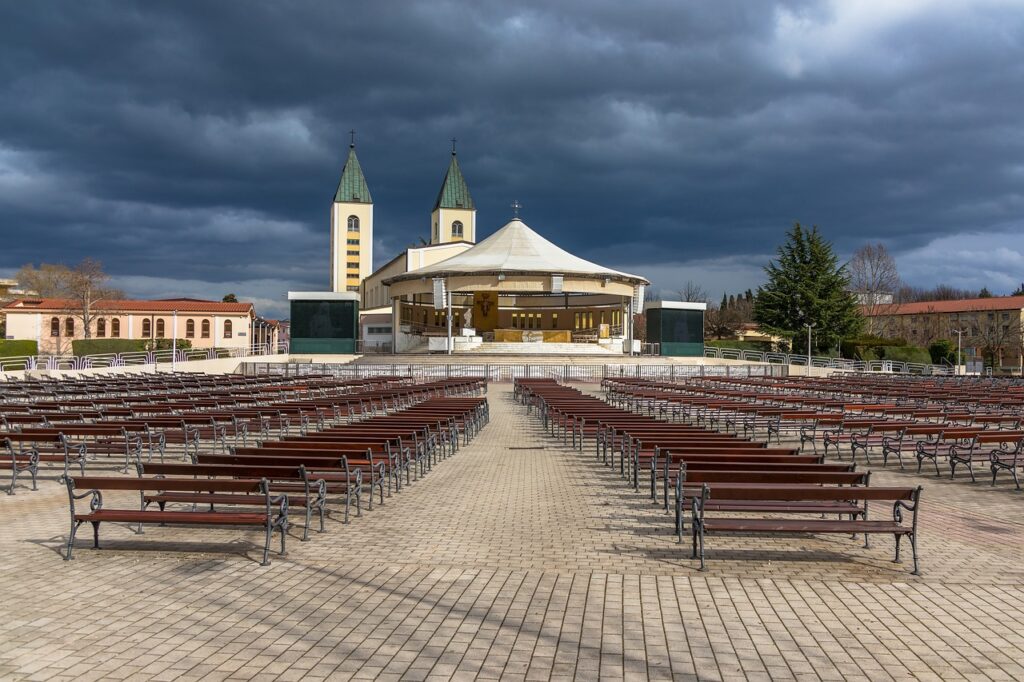
If you want to go on a day trip to Medjugorje and other gems of Bosnia and Herzegovina, starting from Mostar, check out this tour.
You can also visit places in Bosnia and Herzegovina (including Medjugorje) from towns in Croatia, like Dubrovnik or Split.
Another thing you can do while in Medjugorje is join a wine tasting tour.
Bird Watch in Hutovo Blato Reserve
Hutovo Blato Bird Reserve is a natural wonder located in the southern region of BiH. It is a haven for nature lovers and birdwatchers alike, with a diverse and rich ecosystem. This protected area, which covers more than 7,411 hectares and is home to wetlands, marshes, and forests, is an essential habitat for many different species of birds and other wildlife. here, you can expect to see anything from majestic herons and graceful egrets to colorful kingfishers and elusive eagles.
For a photo safari in the National Bird Reserve Hutovo Blato, check out this tour.
Swim Beneath Kravice Waterfalls
Tucked away amidst the verdant landscapes of Bosnia and Herzegovina (BiH), Kravice Waterfalls emerge as a breathtaking spectacle of cascading water, inviting visitors to immerse themselves in its pristine beauty and tranquil surroundings.

Located in the vicinity of the town of Ljubuški, Kravice Waterfalls captivate travelers with their sheer grandeur and natural splendor, making it a must-visit destination for nature lovers and outdoor enthusiasts alike. And since swimming is allowed, if the weather permits, why not take a dip?
If you’re based in Mostar and want to visit Kravice Waterfall, among other attractions, choose this full day tour to Kravice Waterfalls, Blagaj and Počitelj.
If you want to go on a private tour, but only to Kravice Waterfall, and customize the experience as you wish, book this tour.
If you want to visit them from Sarajevo (again, among other BiH attractions), book a knowledgeable guide that will take you to Mostar, Konjic, Sufi House, Počitelj & Kravice Falls.
Go to a Wine Tasting in Trebinje
Surrounded by lush vineyards, rolling hills, and the tranquil waters of the Trebišnjica River, Trebinje beckons travelers to embark on a journey of discovery. Trebinje is well known for its flourishing wine business, as the area around the city is covered in vineyards. Wine lovers can take advantage of wine-tasting tours at nearby wineries, where they can sample highly regarded vintages like Vranac and Žilavka and learn from experts about the craft of winemaking.
Also, you can explore the cobblestone streets of Trebinje’s Old Town, charming squares, Ottoman-era mosques, and well-preserved buildings dating back centuries, such as the Arslanagića Bridge, which spans the Trebišnjica River, offering panoramic views of the surrounding landscape.
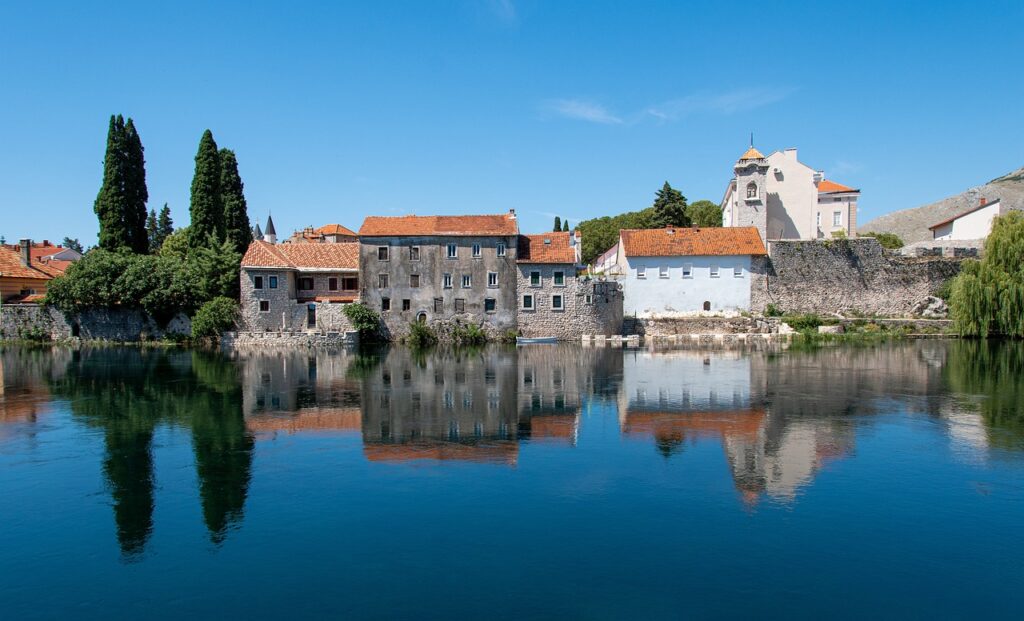
If you want to explore the best highlights of Trebinje with a guide, I recommend booking a walking tour.
Bask in the Sun in Neum
Bosnia and Herzegovina only has 9km of access to the Adriatic Sea. This patch of land actually separates Dubrovnik County from the rest of Croatia, which is weird if you think about it. When I went from Split to Dubrovnik by bus, I had to cross the border twice – once to enter BiH and the second time to enter Croatia again.
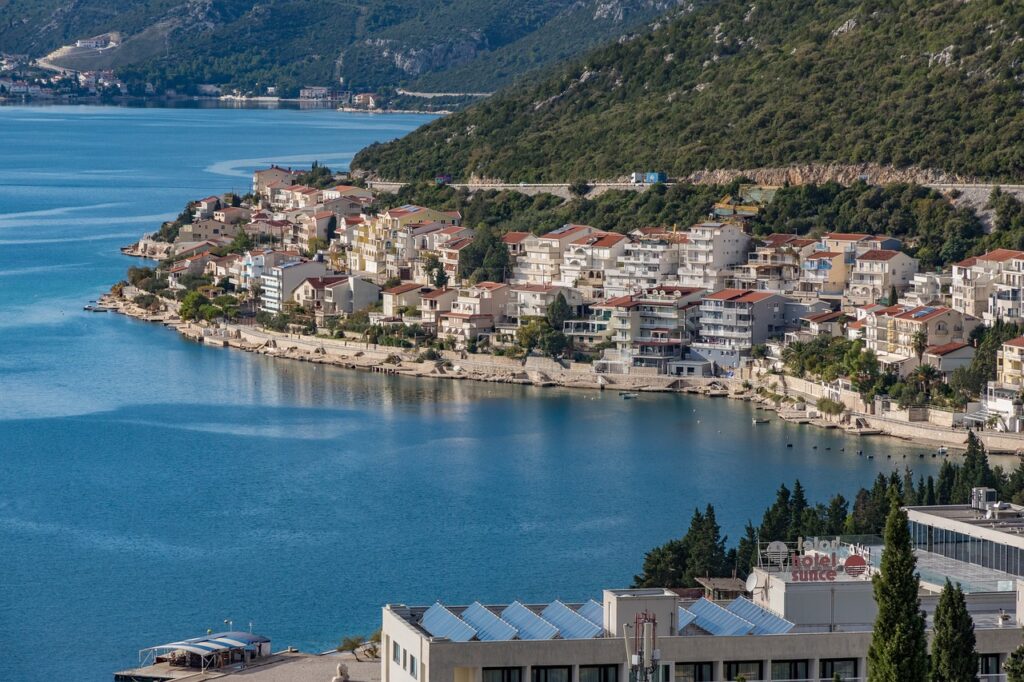
If you want a beach vacation with lower prices than on the Croatian coast, Neum Bay is a good option.
Understanding Local Customs
Bosnia and Herzegovina (BiH) is a country rich in cultural diversity, shaped by centuries of influences from various civilizations and ethnic groups. Understanding and respecting local customs is essential for visitors to BiH to fully immerse themselves in the rich tapestry of its cultural heritage. Here are some key customs and traditions to be aware of when visiting BiH:
Hospitality and Warmth:
- BiH is well known for its friendliness and willingness to welcome guests.
- As a sign of hospitality, it is customary to be invited to locals’ homes and be served traditional Bosnian coffee, freshly baked pastries, and other culinary delights.
Religious Respect:
- Many religious communities, including Muslims, Orthodox Christians, Catholics, and Jews, are present in Bosnia and Herzegovina. Respect for the locals’ religious customs and practices is expected of visitors.
- When you attend places of worship like churches, monasteries, and mosques, you should act respectfully and wear modest clothing. When entering mosques, women are frequently expected to cover their heads and shoulders.
Dining Etiquette:
- In Bosnia and Herzegovina, dining is a social activity, frequently involving shared meals and animated discussions. When dining with locals, it’s common to wait to start eating until the host extends an invitation.
- It is customary to show gratitude for the food and to sample a little of everything that is offered. Compliments to the host on the quality of the meal are also appreciated.
Greetings and Gestures:
- In BiH, greetings usually consist of a firm handshake and direct eye contact. During greetings, it is customary to ask about one’s health and well-being.
- In rural areas, traditional greetings may involve a kiss on each cheek, especially among friends and family members.
Gift Giving:
- In Bosnia and Herzegovina, giving gifts is customary, especially during house visits or as a token of gratitude. Gifts such as flowers, chocolates, or small tokens of appreciation are appropriate.
- When presenting a gift, offering it with both hands is customary as a sign of respect.
Conclusion
Throughout this travel guide of Bosnia and Herzegovina, we have explored the unique attractions and hidden gems that the country has to offer, from historic landmarks and cultural festivals to breathtaking natural wonders and outdoor adventures. Whether you’re exploring the ancient streets of Mostar, savoring traditional Bosnian cuisine in a local tavern, or hiking through the scenic trails of Sutjeska National Park, BiH invites you to embark on a journey of discovery and exploration.
As you plan your visit to Bosnia and Herzegovina, we hope this guide has provided you with valuable insights, practical tips, and inspiration to make the most of your travel experience. Whether you’re a history buff, an outdoor enthusiast, a food lover, or simply seeking a place to unwind and connect with nature, BiH offers endless opportunities for memorable experiences and meaningful encounters.
